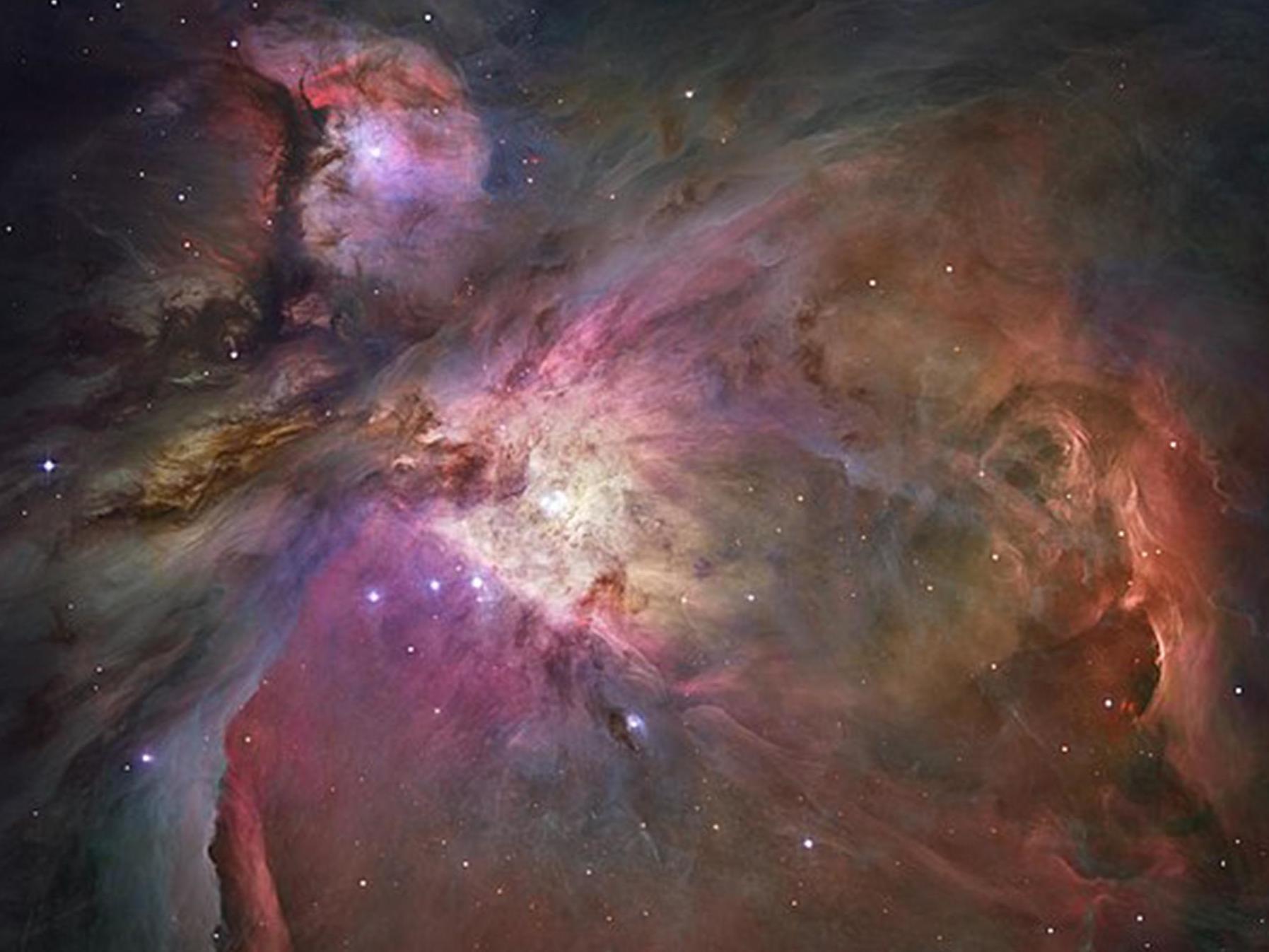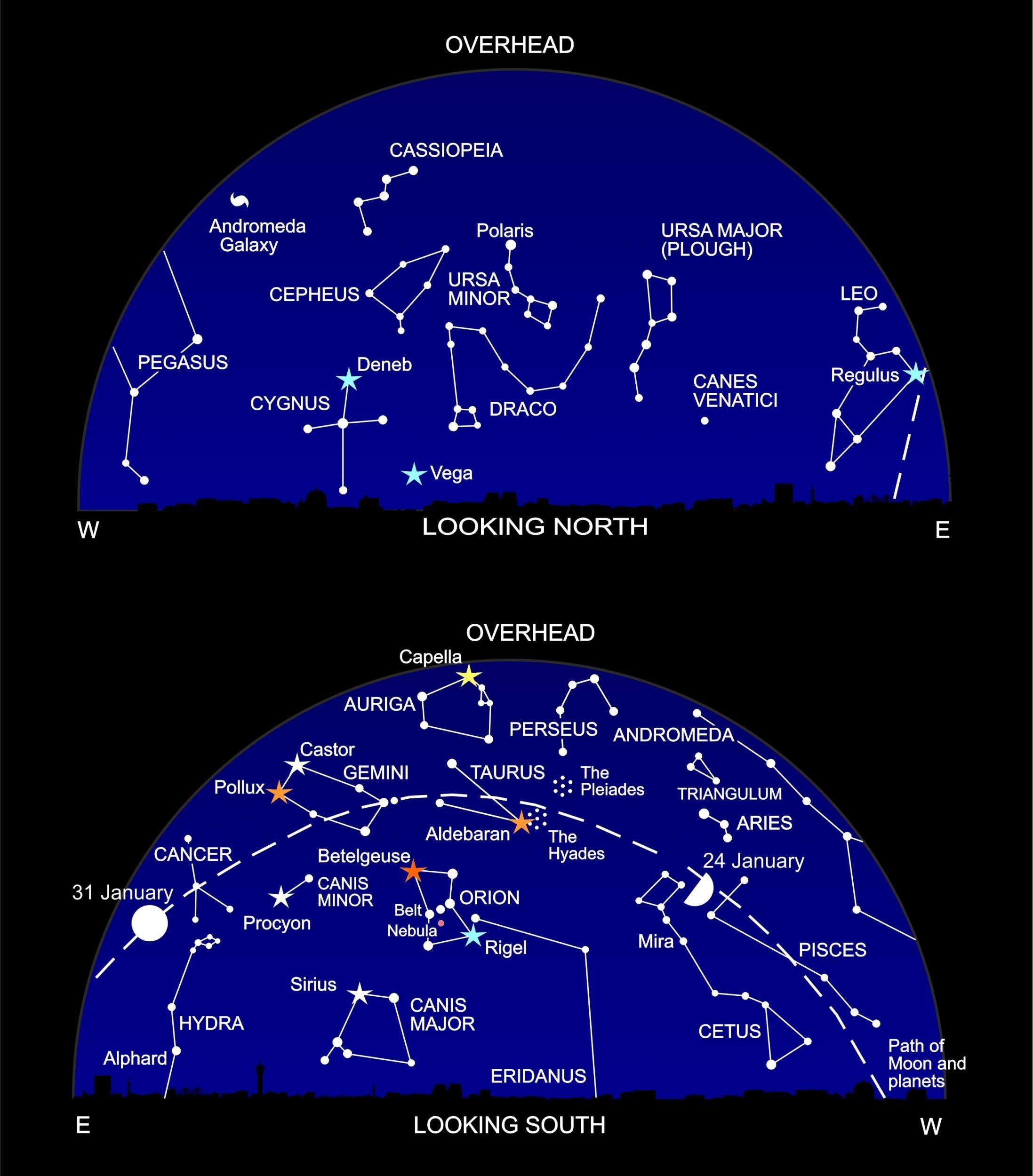Stargazing for January: Orion nebula
The skies are ablaze with stars this month, so put on your winter woollies and check out the best celestial show of the year

Your support helps us to tell the story
From reproductive rights to climate change to Big Tech, The Independent is on the ground when the story is developing. Whether it's investigating the financials of Elon Musk's pro-Trump PAC or producing our latest documentary, 'The A Word', which shines a light on the American women fighting for reproductive rights, we know how important it is to parse out the facts from the messaging.
At such a critical moment in US history, we need reporters on the ground. Your donation allows us to keep sending journalists to speak to both sides of the story.
The Independent is trusted by Americans across the entire political spectrum. And unlike many other quality news outlets, we choose not to lock Americans out of our reporting and analysis with paywalls. We believe quality journalism should be available to everyone, paid for by those who can afford it.
Your support makes all the difference.This month the sky is at its most stunning, with the brilliant winter constellations gracing the heavens. Most resplendent of all is glorious Orion, now riding high in the south.
To western civilizations, Orion was a mighty hunter, with broad shoulders, a sword (the Orion Nebula) and a belt of three stars cinching in his tunic. Legend has it that Orion was the most handsome man on Earth (and the most boastful!). He claimed to be capable of killing every animal on the planet, which didn’t exactly please the gods. In retaliation, they sent a scorpion to bite him, which did the trick.
Diana – goddess of hunting – took pity on the dead superhero, and placed him in the sky to ensure his immortality.
Other cultures also marvelled at Orion, and “joined up the dots” to reflect their own myths. The Aboriginals saw him as a canoe, being rowed by three fishermen (Orion’s belt). One of them caught a forbidden fish (the Orion Nebula), and all three were cast into the heavens for their misdemeanour
The Native North Americans had a rich sky lore. According to the Chinook tribe, they saw the constellation as two canoes: the big one the belt, and the small one the sword. The canoes challenged each other to catch a salmon from “the big river” (the Milky Way). The small canoe was winning the race, and eventually the fishermen spotted their quarry in the middle of the river. It was Sirius – the brightest star in the sky.
Orion is home to two well-known stars: Betelgeuse (his shoulder) and Rigel (the bottom of his tunic). Both stars are supergiants, roughly 120,000 times brighter than the Sun.
Blood-red Betelgeuse (or “beetlejuice” to children) is the bigger of the two. A thousand times wider than the Sun, it would swamp all the planets out to Jupiter if it were placed in our solar system. A star near the end of its life, Betelgeuse is unstable, and fluctuates in brightness as it tries to get a grip on its billowing gases. In the not-too-distant future, it will explode as a supernova: but remember – in cosmic terms, that means a few million years.
Rigel is smaller than Betelgeuse, but brighter; it shines a brilliant blue-white, reflecting its incandescent temperature of 11,000K. If you’ve got a moderate telescope, look out for Rigel’s nearby companion star.
But the true glory of Orion is its nebula. Situated just below the hero’s belt, this cloud of gas – 24 light years across – is the nearest major “star factory” to the Earth. It’s visible to the unaided eye, even in light-polluted towns, and is a glorious sight in binoculars or a small telescope.
The nebula is lit by a small star cluster made of infant stars – just 300,000 years old (yesterday to astronomers) – which moderate telescopes can make out as four stars (the Trapezium). But the dark natal material in the nebula probably hides thousands more.
It’s the brightest part of a vast gas complex in Orion, which began forming stars hundreds of thousands of years ago. The gas cloud is dark and dusty, riddled with cosmic soot, shed by old, cool stars. It permeates the whole of the Orion constellation, and although the complex isn’t visible, it emits heat radiation – which means that it’s a great target for infrared telescopes.
This giant gas cloud is so massive that it’s capable of making 200,000 stars. So: with starbirth and stardeath on the agenda, Orion looks to be a pretty busy corner of the cosmos for millions of years to come.
What’s up?
The skies are ablaze with stars this month, so put on your winter woollies and check out the best celestial show of the year!
And use mighty Orion as a celestial signpost to the stars and constellations of the brilliant winter constellations. To his lower left you’ll find Sirius. It’s unmistakeable, because it’s the brightest star in the sky, and on frosty evenings you’ll see Sirius twinkling wildly in a kaleidoscope of colours as its light passes through Earth’s roiling atmosphere.

Sirius, also known as the Dog Star, in the jewel in the crown of the constellation of Canis Major, the great dog. Above it lies Orion’s little doggy companion, Canis Minor. The brightest star in this constellation is Procyon, its name meaning “before the dog” as this star rises just before Sirius.
These are the first two in a great arc of stars straddling the southern skies. Next up are the twin stars of Pollux and Castor, in the constellation Gemini. Almost overhead you’ll find Capella: its name means “the little she-goat”, which is rather odd as it lies in Auriga, the charioteer.
Turn down towards the lower right, and you come across the Seven Sisters or Pleiades and the red star Aldebaran, marking the angry red eye of the heavenly bull, Taurus, which is attacking Orion.
If you’re looking out for planetary action, you’ll have to wait till the wee small hours when the other worlds of the solar system being to rise in the southeast.
First up, around 3am, is dazzling Jupiter, shining more brilliantly than even Sirius. Nearby, and 20 times fainter, you’ll find Mars with a distinctly rosy hue. The red planet passes very close to Jupiter – just half the Moon’s diameter – on the morning of 7 January.
Just before dawn, very low on the horizon, Mercury and Saturn are also getting friendly: the innermost planet passes about a Moon’s-width from the ringworld in early hours of 13 January. The crescent Moon forms a lovely sight with the planetary pair in the morning twilight on 15 January.
Finally, look out for an unusually brilliant full moon on the very last night of January. It’s the second “supermoon” of the month, though the Moon isn’t quite as close and bright as it was on 1 January. Americans are also calling this a “blue moon”, which is their term for the second full moon in the same month. And people in North America and Asia are lucky enough to see the Moon eclipsed tonight – though the UK and the rest of Europe miss out on the action.
7 January, morning: Mars passes close by Jupiter
8 January 10.25pm: Moon at last quarter
13 January, morning: Mercury passes close by Saturn
17 January, 2.17am: New moon
24 January, 10.20pm: Moon at first quarter
31 January, 1.27pm: Full moon; supermoon
For the low-down on all that’s up in the sky this year, check out Heather Couper and Nigel Henbest’s latest book, ‘Philip’s 2018 Stargazing’
Join our commenting forum
Join thought-provoking conversations, follow other Independent readers and see their replies
Comments